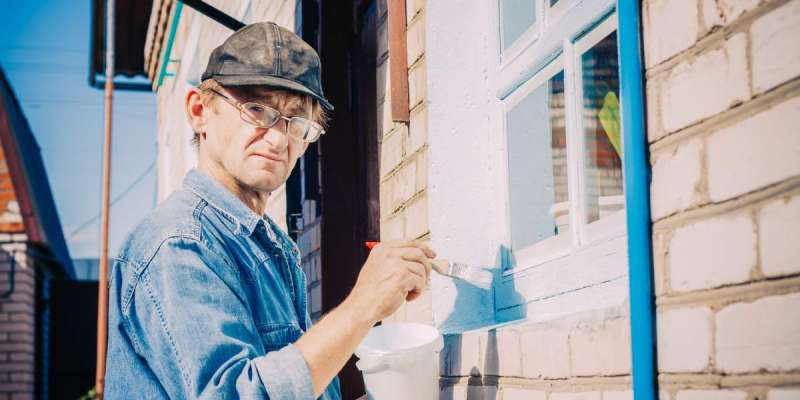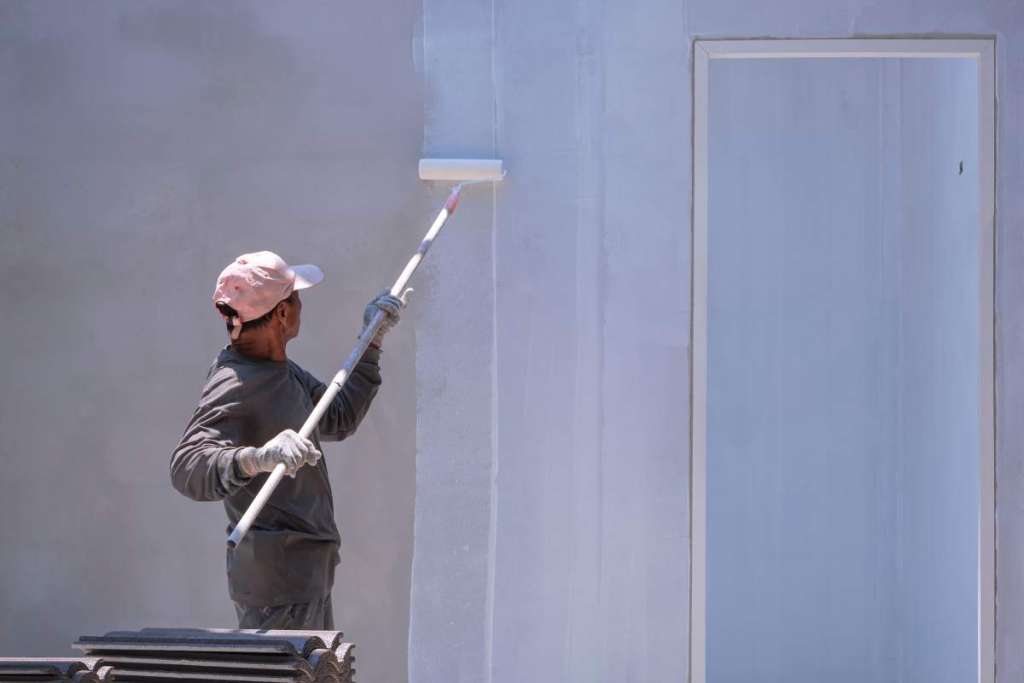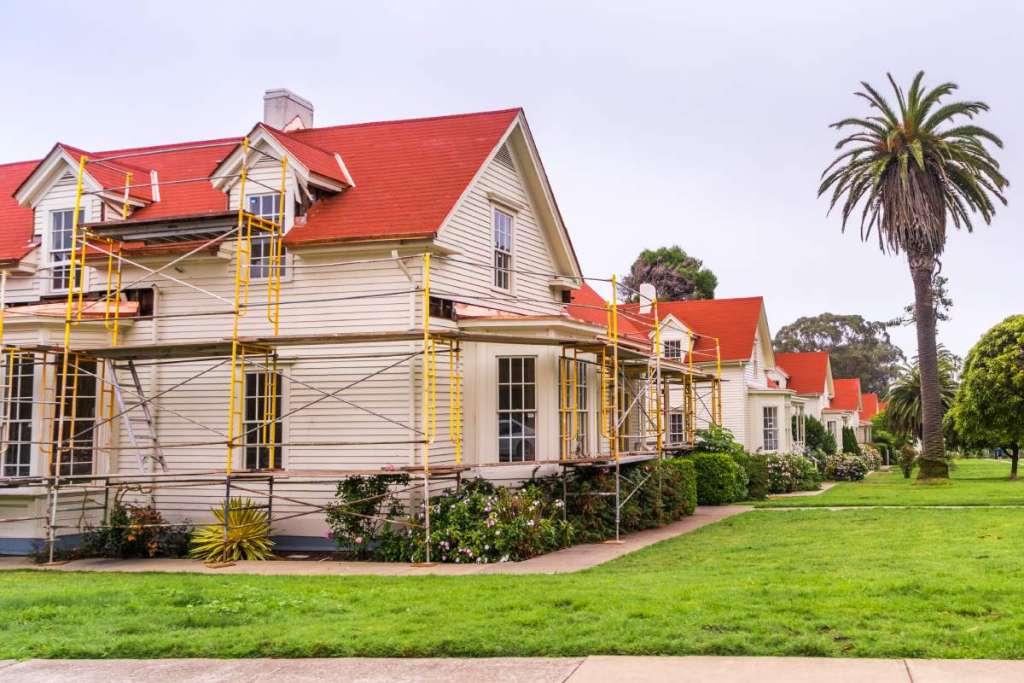Exterior painting is a critical part of home maintenance. It not only boosts your home’s curb appeal but also provides protection against harsh weather conditions, ensuring your property remains in good shape for years.
However, choosing the right exterior paint and applying it correctly can be daunting. The wrong choice or poor application can lead to peeling, cracking, and fading in just a few years.
In this article, we’ll cover how to select the best exterior paint and techniques to make your paint job last as long as possible.
You might also read:
- What Is Tree Pruning, How Do You Define Pruning A Tree and What Does it Do?
- Top Four Uses for Your Pressure Washers
- This is Why You Need to Hire Professional Kitchen Builders & Designers
Understanding Exterior Paint Types
The first step in exterior painting is understanding the different types of paint available. Exterior paint is formulated to withstand weather elements, UV rays, and temperature fluctuations, but not all exterior paints are created equal. Here are the most common types:
- Acrylic Paint: This is the most popular choice for exterior painting due to its durability and resistance to fading. Acrylic paint is flexible, allowing it to expand and contract with temperature changes without cracking. It’s also water-based, making it easy to clean with soap and water.
- Latex Paint: Often confused with acrylic, latex paint is also water-based but has a slightly different composition. While not as flexible as acrylic, it is still a great choice for most exterior surfaces and offers good protection from the elements.
- Oil-Based Paint: Although less commonly used today, oil-based paint provides a smooth finish and is highly durable. However, it takes longer to dry, has strong fumes, and is more difficult to clean up. It’s ideal for high-traffic areas or surfaces that require a hard finish, like trim and doors.
- Elastomeric Paint: This type of paint is highly flexible and ideal for masonry surfaces like concrete, stucco, and brick. Elastomeric paint can stretch without cracking, making it perfect for surfaces that experience shifts and expansions.
When choosing the type of paint, consider the material of your home’s exterior—whether it’s wood, brick, stucco, or metal—and the climate in your area. For instance, homes in humid environments might benefit from mildew-resistant paint, while those in sunny, hot areas need UV-resistant coatings.
Choosing the Right Colour
Picking the right colour for your home’s exterior is a balance between aesthetics and practicality. Bold colours may stand out, but lighter hues generally last longer as they reflect more sunlight and absorb less heat, reducing the paint’s wear and tear. Darker colours absorb more heat, which can lead to faster fading and deterioration.
Here are a few considerations when selecting the colour:
- Climate: If you live in a sunny area, lighter colours will prevent excessive heat absorption, prolonging the paint’s life. In cooler climates, dark colours can help absorb heat and may be more fitting for architectural styles.
- Neighbourhood and Style: While it’s tempting to choose a unique colour, make sure it blends well with your neighbourhood and your home’s architecture. Classic colours like white, beige, and soft greys are timeless and versatile.
- Accents and Trims: You can use bolder or contrasting colours for trims, shutters, and doors to make the design pop while keeping the main body in a neutral shade for longevity.
Surface Preparation: The Key to Longevity
Even the best paint won’t last long if the surface is not properly prepared. Surface preparation is crucial for paint adhesion and longevity. Here’s a step-by-step guide on how to prepare your exterior walls:
- Clean the Surface: Dirt, mildew, and old peeling paint can prevent new paint from adhering properly. Start by pressure washing the exterior to remove dirt and grime. For areas with mildew, use a solution of water and bleach to clean the surface.
- Scrape and Sand: Peeling and loose paint must be scraped off to create a smooth surface. After scraping, sand the area to smooth out rough patches and blend the edges of old paint with the bare surface.
- Repair Damaged Areas: Inspect the exterior for any cracks, holes, or damaged areas, especially around doors, windows, and trims. Use exterior-grade caulk to fill in gaps and cracks, which will prevent moisture from getting underneath the paint.
- Prime the Surface: Applying a high-quality primer is essential for paint adhesion, especially on bare wood, chalky surfaces, or repairs. Primer seals the surface and provides a consistent base for the top coat, which can extend the life of your paint job.
Application Techniques
Now that your surface is ready, it’s time to apply the paint. The way you apply the paint can significantly impact how long it lasts. Here are some techniques to ensure durability:
- Use High-Quality Brushes and Rollers: Cheap tools can leave streaks and uneven layers, leading to premature peeling. Invest in high-quality brushes for cutting edges and rollers for larger surfaces. For large, smooth areas like siding, use a roller with a thicker nap for better coverage.
- Don’t Skimp on Paint: Applying multiple thin coats is better than one thick coat. A thick coat may look great initially but is prone to cracking and peeling as it dries. Thin coats adhere better and dry more evenly.
- Apply in the Right Weather: Weather conditions during application matter a lot. Paint during mild, dry weather—ideally between 10°C and 30°C. Avoid painting in direct sunlight, high humidity, or windy conditions as these can cause the paint to dry too quickly or unevenly.
- Seal Joints and Edges: Paint wears out fastest on edges and joints, where water can penetrate and cause damage. Make sure to properly seal all edges and joints with caulk and apply additional coats of paint to these areas to protect them.
Maintenance Tips to Extend the Life of Your Paint Job
Once you’ve completed the exterior painting, maintenance plays a key role in ensuring it lasts. Here are some maintenance tips to help your exterior paint last the longest:
- Inspect Annually: Take the time to inspect your exterior paint job once a year. Look for signs of peeling, cracking, or mildew. Address small problems before they become big issues.
- Clean the Exterior: Dirt and grime can shorten the life of your paint job. Periodically wash your home’s exterior with a garden hose or low-pressure washer to remove dirt, mould, and mildew.
- Repaint High-Traffic Areas: Some areas, like trim, doors, and window sills, experience more wear and tear than others. Touch up these high-traffic areas every couple of years to maintain their appearance and prevent early wear.
- Check for Moisture Damage: Ensure gutters, downspouts, and drainage systems are working properly. Water damage can cause paint to blister, peel, or fade prematurely. Repair any water leaks or drainage issues to prevent long-term damage.
- Reapply Caulking: Over time, caulking can crack and shrink, allowing water to seep in. Inspect the caulking around doors, windows, and joints every year and reapply where necessary.
How Long Will Your Paint Last?
The lifespan of your exterior paint depends on several factors, including the type of paint, surface preparation, and environmental conditions. Generally, a high-quality exterior paint job should last between 7 to 10 years if applied correctly and maintained. Some elastomeric paints can last even longer, up to 15 years on masonry surfaces.
Conclusion
Choosing the right paint and applying it correctly can make a significant difference in the longevity of your exterior paint job. Focus on selecting high-quality paints that suit your climate and exterior surface, prepare the surface meticulously, and apply the paint under optimal weather conditions.
Once the paint job is complete, regular maintenance and touch-ups will ensure your home looks fresh and protected for years to come. Proper exterior painting is an investment that pays off by enhancing your home’s beauty, protecting it from the elements, and reducing future maintenance costs.










